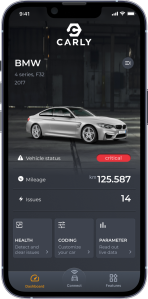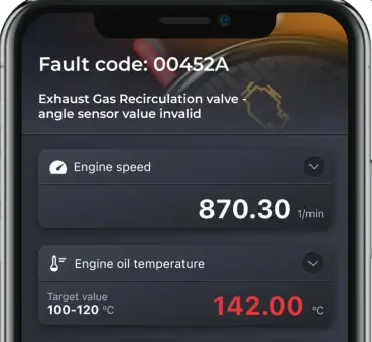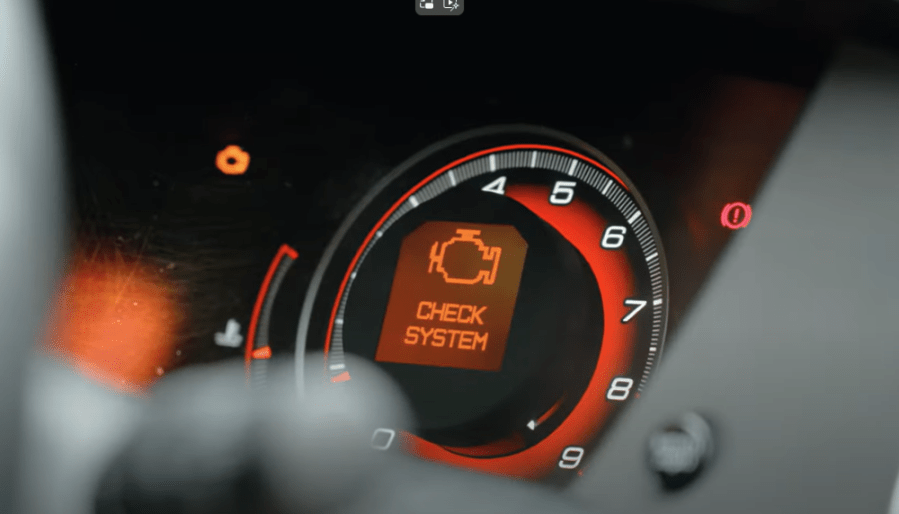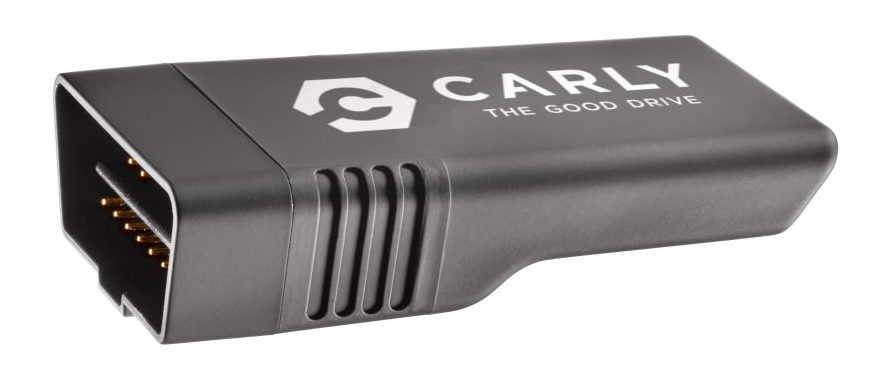Engine fault codes have made diagnosing faults on modern cars a lot easier, but only if you know what the codes mean. Plus, as cars get more complex, so do the trouble codes. We’ve joined forces with the experts at Carly to explain all you need to know about car fault codes.
We’ve all been there. Happily cruising down the road enjoying the drive, only to have your dashboard light up like a Christmas tree with a dreaded Check Engine light? It’s bloody annoying. But more than that you immediately start to worry about how much this is going to cost to fix.
Only those error messages needn’t be anything to worry about. When you know how to decipher them and learn how to take appropriate action, those fault codes can, quite literally, be a lifesaver for you and/or your car. That’s why we’ve teamed up with the experts at Carly, and are diving deep into the cryptic world of car fault codes. So, let’s take a closer look and demystify the world of car fault codes.
What Are Car Fault Codes, DTC Codes, or OBD Codes?
First things first – what exactly are car fault codes, DTC codes or OBD codes? Well, for starters, they all mean the same thing. What car owners often call car fault codes are also known as diagnostic trouble codes (DTCs) by manufacturers, mechanics and those in the trade. You may also hear them called OBD codes. This is because they are accessed via the OBD-II port using an OBD scanner tool.
But what are they? Simply put, car fault codes are alphanumeric codes that your vehicle’s onboard diagnostics (OBD) system generates when it detects a problem. Think of them as your car’s way of communicating when it’s not feeling 100%. These codes can help identify an issue, making it easier for you (or your mechanic) to diagnose and fix the problem.
Why Do Car Fault Codes Matter?
Understanding car fault codes can save you a ton of time, money, and hassle. Instead of blindly poking around under the bonnet or getting ripped off at the garage, you can get a clear idea of what’s going on with your car. Plus, with more complex systems on modern engines, all components need to work in perfect harmony with one another.
The guys at Carly say they frequently see instances where an owner has ignored an initial fault code, only to lead to significant damage and much more costly repair bills. A classic example is an engine suffering a slight misfire. You might think this is annoying but because the car runs you decide to put off repairing it until a more convenient time, or until it gets worse. What you don’t realise is that the excess fuel being dumped into the exhaust has now totally destroyed the catalytic converter. So, what would have been a quick and relatively cheap fix is now a repair bill running into the thousands!
As they say, “Knowledge is power”, and this is definitely true when it comes to cars. So, if you have the knowledge, make sure you use it wisely.
 How Can I Check My Car’s Fault Code?
How Can I Check My Car’s Fault Code?
All right, let’s get to the good stuff – how do you check your car’s fault codes? Gone are the days of guessing games and unnecessary trips to the mechanic. With a nifty tool called an OBD-II scanner, you can quickly and easily read these codes yourself.
How to Use an OBD-II Scanner
An OBD-II scanner is a small device that plugs into your car’s OBD-II port (usually found under the dashboard). Once connected, it reads the fault codes stored on your car’s computer. They are incredibly quick and easy to use. Here’s what you need to do to check your car’s fault codes:
- Locate the OBD-II port: This is typically found under the dashboard or in the footwell area.
- Plug in the scanner: Connect your OBD-II scanner to the port.
- Turn on the ignition switch: Switch your car to the “ON” position, but don’t start the engine.
- Read the codes: Follow the scanner’s instructions to read the fault codes. Most scanners will display the codes on a screen, and some even provide a brief description of the issue.
Are all OBD-II Scanners the same?
Not all OBD-II Scanners are created equal. Some require the unit to be connected directly to the car, while more modern Bluetooth OBD-II Scanners use an adapter and connect to your smartphone.
Some, like Carly, can read pretty much everything on your car. This provides access levels to rival the very expensive OEM diagnostic machines that your local main dealer might have. Most cheaper versions, however, can only read the generic fault codes. Plus, the user interface can be very basic.
Budget OBD-II scanners can point you in the correct general direction of a fault. But if you want to isolate a particular problem, you will need the comprehensive database of vehicle-specific fault codes of something more sophisticated, like Carly.
Decoding Standardised Fault Codes
Each vehicle will have a complete list of unique fault codes that relate to manufacture- and even model-specific systems fitted to that car. Depending on the car in question, there can be hundreds of possible fault codes. But the good news is that list of codes isn’t as difficult to decipher as you might fear. Well, at least the standardised fault codes aren’t.
Handily, car fault codes all follow the same format. They all start with a letter (P, B, or C), followed by four numbers. And breaking those down allows us to decode the fault.
Decoding Fault Codes: The Letter
The first letter denotes what part of the car is at fault.
- P = Powertrain
- B = Body
- C = Chassis
Decoding Fault Codes: The First Number
The first of the four numbers will be either a ‘0’ or a ‘1’.
- 0 = Standardised fault codes
- 1 = Manufacturer specific codes
Decoding Fault Codes: The Second Number
The second digit denotes which of the car systems is at fault. There are eight different categories:
- 0 = Fuel and Air Metering and Auxiliary Emission Controls
- 1 = Fuel and Air Metering
- 2 = Fuel and Air Metering (injector circuit)
- 3 = Ignition systems or misfires
- 4 = Auxiliary emission controls
- 5 = Vehicle speed control & idle control systems
- 6 = Computer & output circuit
- 7 = Transmission
Decoding Fault Codes: The Third & Fourth Numbers
The third and fourth digits are simply used to define the specific problem in question.
We had the DTC code P0303 appear on a project car recently. From what we’ve just learned, we can determine the fault is a misfire on cylinder three. The ‘P’ shows it’s a powertrain problem and the first ‘0’ means it’s a standard fault code. The ‘3’ indicates an ignition system or misfire issue, and the ’03’ tells us it’s on cylinder three. Simple, really.
 Pinpointing The Problem
Pinpointing The Problem
That’s all well and good, but it doesn’t really pinpoint the fault. In our example, the P0303 trouble code could have been triggered by anything from a loose connection of an HT lead, to a dodgy electrical system, to an issue with the fuel system, or any other number of problems. All the standard fault code tells us is that we have a misfire on cylinder three. It doesn’t identify the root cause of the misfire.
That’s where more comprehensive OBD-II scanners like Carly’s can really help. We’ve got a separate feature on how a good OBD-II scanner can save you money, but when you consider our example you can see how quickly the costs of replacing spark plugs, HT leads, and coilpacks can quickly mount up before you finally fix the fault.
Instead, Carly can identify which component part is at fault. Even in situations where the symptoms may be caused by one or more faulty component parts, Carly draws on an extensive database based on previous repairs of the same vehicle to identify which is the most likely culprit. More than that, Carly’s built-in Smart Mechanic feature provides detailed repair tips written by expert mechanics, to give you the confidence to make the repair yourself without having to pay garage costs.
Preventing Future Fault Codes
Of course, prevention is better than cure, right? And Carly can help here too. Carly is a powerful diagnostic tool that not only reads fault codes but also offers detailed insights into your car’s health. It’s like having a mechanic in your pocket!
With Carly, you can perform in-depth diagnostics, reset error codes, and even customise your car’s settings. More than that, Carly also monitors ‘soft codes’ too. These are like a precursor to a full fault code that brings on the engine management light. If the ECU has detected an odd reading from a sensor, it may flag that as a soft code to keep an eye on before it gets worse. Carly accesses these too, allowing you to make any repairs before they lead to impending failure.
On top of that, Carly’s Used Car Checker is a fantastic tool to have when looking to buy your next car. Check the mileage hasn’t been tampered with. Corroborate the seller’s story about which parts have been replaced and when. Even check how it’s been driven and what kind of life a car’s had. All from the power of a little Bluetooth adapter and your smartphone! Once you try Carly, you’ll wonder how you ever lived without it.
Understanding Car Fault Codes
Car fault codes don’t have to be a mystery. With the right tools and knowledge, you can easily decode these error messages and keep your vehicle running smoothly. Whether you’re a seasoned car enthusiast or just someone who wants to save a few quid on repairs, understanding car fault codes is a valuable skill. And with Carly in your pocket, it’s easier than ever.
What Else Can Carly Do?
Carly is such a versatile tool, and it offers so much more than just a car fault code reader. The Carly App is free to download for your smartphon from both the Google Play Store and the Apple App Store, and offers some fantatsic features. One of the best is the new Carly free car history checker that provides you with loads of info on your car’s history, for free.
In addition, the Carly Scanner can be used to look for evidence of mileage tampering, can help you avoid getting ripped off at the garage, can help you spot hidden problems, and can even be used to customise your car’s coding. All for around £80! Every car enthusiast needs one in their glovebox.
RELATED ARTICLES
What is Mileage Tampering? And How Can I Avoid It?
3 Ways to Spot Hidden Problems with Your Car
Unlock Hidden Car Secrets with Carly’s Free Car History Checker!






